|
||||||||||||||
|
|
||||||||||||||
|
||||||||||||||||||||||
 |
 |
||||||||||||||||||||||||||||||||||||||||||||||||||||||||||||||||||||||||||||||||||||||||||||||||||||||||||||||||||||||||||||||||||||||||||||||||||||||||||||||||||||||||||||||||||||||||||||||||||||||||||||||||||||||||||||||||||||||||||||||||||||||||||||||||||||||||||||||||||||||||||||||||||||||||||||||||||||||||||||||||||||||||||||||||||||||||||||||||||||||||||||||||||||||||||||||||||||||||||||||||||||||||||||||||||||||||||||||||||||||||||||||||||||||||||||||||||||||||||||||||||||||||||||||||||||||||||||||||||||||||||||||||||||||||||||||||||||||||||||||||||||||||||||||||||||||||||||
|
|||||||||||||||||||||||||||||||||||||||||||||||||||||||||||||||||||||||||||||||||||||||||||||||||||||||||||||||||||||||||||||||||||||||||||||||||||||||||||||||||||||||||||||||||||||||||||||||||||||||||||||||||||||||||||||||||||||||||||||||||||||||||||||||||||||||||||||||||||||||||||||||||||||||||||||||||||||||||||||||||||||||||||||||||||||||||||||||||||||||||||||||||||||||||||||||||||||||||||||||||||||||||||||||||||||||||||||||||||||||||||||||||||||||||||||||||||||||||||||||||||||||||||||||||||||||||||||||||||||||||||||||||||||||||||||||||||||||||||||||||||||||||||||||||||||||||||||
|
At a time when the marque was generally pilloried by the majority of the UK automotive press, Car stood alone in its appreciation of the double chevrons. The Ro80 was unveiled at the 1967 Frankfurt Motor Show and went on sale in 1968. It was fitted with the Wankel rotary engine manufactured by Comotor, a joint venture between NSU and Citroën. The same engine was also fitted to the GS Birotor. The BMW 520 was launched in 1972 and offered very little innovation - rear wheel drive and very traditional styling. So how did this eighteen year old design stack up against its much more modern rivals? |
|||||||||||||||||||||||||||||||||||||||||||||||||||||||||||||||||||||||||||||||||||||||||||||||||||||||||||||||||||||||||||||||||||||||||||||||||||||||||||||||||||||||||||||||||||||||||||||||||||||||||||||||||||||||||||||||||||||||||||||||||||||||||||||||||||||||||||||||||||||||||||||||||||||||||||||||||||||||||||||||||||||||||||||||||||||||||||||||||||||||||||||||||||||||||||||||||||||||||||||||||||||||||||||||||||||||||||||||||||||||||||||||||||||||||||||||||||||||||||||||||||||||||||||||||||||||||||||||||||||||||||||||||||||||||||||||||||||||||||||||||||||||||||||||||||||||||||||
|
|||||||||||||||||||||||||||||||||||||||||||||||||||||||||||||||||||||||||||||||||||||||||||||||||||||||||||||||||||||||||||||||||||||||||||||||||||||||||||||||||||||||||||||||||||||||||||||||||||||||||||||||||||||||||||||||||||||||||||||||||||||||||||||||||||||||||||||||||||||||||||||||||||||||||||||||||||||||||||||||||||||||||||||||||||||||||||||||||||||||||||||||||||||||||||||||||||||||||||||||||||||||||||||||||||||||||||||||||||||||||||||||||||||||||||||||||||||||||||||||||||||||||||||||||||||||||||||||||||||||||||||||||||||||||||||||||||||||||||||||||||||||||||||||||||||||||||||
 |
|||||||||||||||||||||||||||||||||||||||||||||||||||||||||||||||||||||||||||||||||||||||||||||||||||||||||||||||||||||||||||||||||||||||||||||||||||||||||||||||||||||||||||||||||||||||||||||||||||||||||||||||||||||||||||||||||||||||||||||||||||||||||||||||||||||||||||||||||||||||||||||||||||||||||||||||||||||||||||||||||||||||||||||||||||||||||||||||||||||||||||||||||||||||||||||||||||||||||||||||||||||||||||||||||||||||||||||||||||||||||||||||||||||||||||||||||||||||||||||||||||||||||||||||||||||||||||||||||||||||||||||||||||||||||||||||||||||||||||||||||||||||||||||||||||||||||||||
| NSU Ro80 | 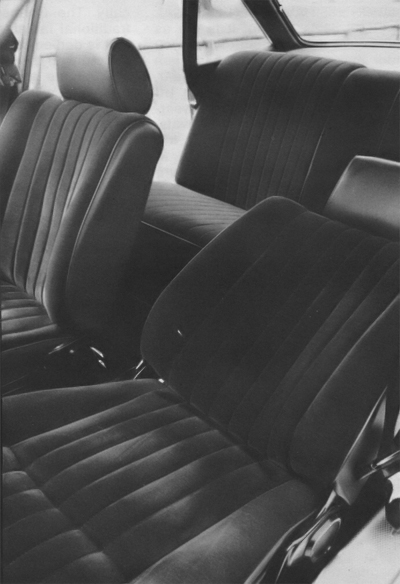 |
||||||||||||||||||||||||||||||||||||||||||||||||||||||||||||||||||||||||||||||||||||||||||||||||||||||||||||||||||||||||||||||||||||||||||||||||||||||||||||||||||||||||||||||||||||||||||||||||||||||||||||||||||||||||||||||||||||||||||||||||||||||||||||||||||||||||||||||||||||||||||||||||||||||||||||||||||||||||||||||||||||||||||||||||||||||||||||||||||||||||||||||||||||||||||||||||||||||||||||||||||||||||||||||||||||||||||||||||||||||||||||||||||||||||||||||||||||||||||||||||||||||||||||||||||||||||||||||||||||||||||||||||||||||||||||||||||||||||||||||||||||||||||||||||||||||||||||
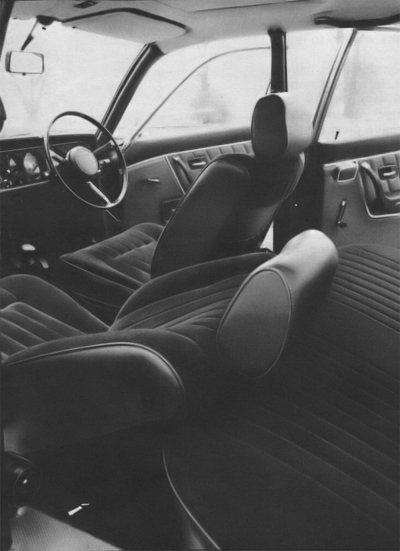 |
|||||||||||||||||||||||||||||||||||||||||||||||||||||||||||||||||||||||||||||||||||||||||||||||||||||||||||||||||||||||||||||||||||||||||||||||||||||||||||||||||||||||||||||||||||||||||||||||||||||||||||||||||||||||||||||||||||||||||||||||||||||||||||||||||||||||||||||||||||||||||||||||||||||||||||||||||||||||||||||||||||||||||||||||||||||||||||||||||||||||||||||||||||||||||||||||||||||||||||||||||||||||||||||||||||||||||||||||||||||||||||||||||||||||||||||||||||||||||||||||||||||||||||||||||||||||||||||||||||||||||||||||||||||||||||||||||||||||||||||||||||||||||||||||||||||||||||||
 |
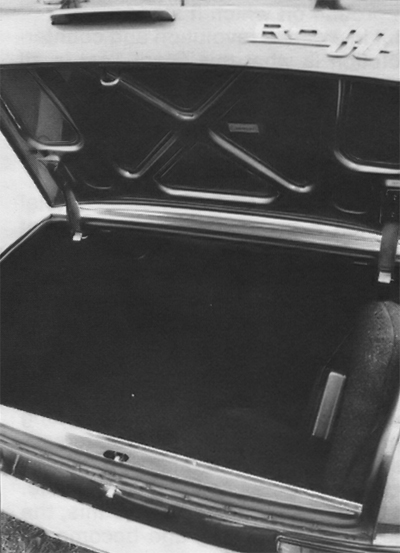 |
||||||||||||||||||||||||||||||||||||||||||||||||||||||||||||||||||||||||||||||||||||||||||||||||||||||||||||||||||||||||||||||||||||||||||||||||||||||||||||||||||||||||||||||||||||||||||||||||||||||||||||||||||||||||||||||||||||||||||||||||||||||||||||||||||||||||||||||||||||||||||||||||||||||||||||||||||||||||||||||||||||||||||||||||||||||||||||||||||||||||||||||||||||||||||||||||||||||||||||||||||||||||||||||||||||||||||||||||||||||||||||||||||||||||||||||||||||||||||||||||||||||||||||||||||||||||||||||||||||||||||||||||||||||||||||||||||||||||||||||||||||||||||||||||||||||||||||
|
ALTHOUGH
WE HAVE BEEN CRITICAL of the BMW 520's pricing, it is not as outrageous
at it first seems when you consider that the NSU Ro80 has been hovering
around £3000 since last year, and that the latest 2.3 litre Citroen DS
gets close to that figure when it's wearing Pallas trim. In context
with its rivals, each member of this Giant Test trio makes more sense
than it does in isolation, but that is hardy likely to cure the severe
shock to the wallet that is associated with parting with £3000 for
two-litres and four cylinders or in the case of the NSU, for a journey
into the partly unknown. |
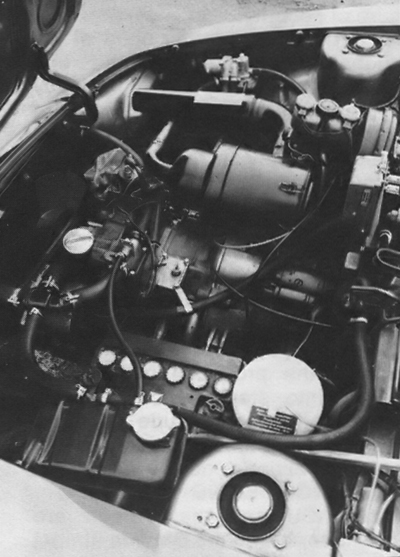 |
||||||||||||||||||||||||||||||||||||||||||||||||||||||||||||||||||||||||||||||||||||||||||||||||||||||||||||||||||||||||||||||||||||||||||||||||||||||||||||||||||||||||||||||||||||||||||||||||||||||||||||||||||||||||||||||||||||||||||||||||||||||||||||||||||||||||||||||||||||||||||||||||||||||||||||||||||||||||||||||||||||||||||||||||||||||||||||||||||||||||||||||||||||||||||||||||||||||||||||||||||||||||||||||||||||||||||||||||||||||||||||||||||||||||||||||||||||||||||||||||||||||||||||||||||||||||||||||||||||||||||||||||||||||||||||||||||||||||||||||||||||||||||||||||||||||||||||
| Citroen DS23 | |||||||||||||||||||||||||||||||||||||||||||||||||||||||||||||||||||||||||||||||||||||||||||||||||||||||||||||||||||||||||||||||||||||||||||||||||||||||||||||||||||||||||||||||||||||||||||||||||||||||||||||||||||||||||||||||||||||||||||||||||||||||||||||||||||||||||||||||||||||||||||||||||||||||||||||||||||||||||||||||||||||||||||||||||||||||||||||||||||||||||||||||||||||||||||||||||||||||||||||||||||||||||||||||||||||||||||||||||||||||||||||||||||||||||||||||||||||||||||||||||||||||||||||||||||||||||||||||||||||||||||||||||||||||||||||||||||||||||||||||||||||||||||||||||||||||||||||
 |
 |
||||||||||||||||||||||||||||||||||||||||||||||||||||||||||||||||||||||||||||||||||||||||||||||||||||||||||||||||||||||||||||||||||||||||||||||||||||||||||||||||||||||||||||||||||||||||||||||||||||||||||||||||||||||||||||||||||||||||||||||||||||||||||||||||||||||||||||||||||||||||||||||||||||||||||||||||||||||||||||||||||||||||||||||||||||||||||||||||||||||||||||||||||||||||||||||||||||||||||||||||||||||||||||||||||||||||||||||||||||||||||||||||||||||||||||||||||||||||||||||||||||||||||||||||||||||||||||||||||||||||||||||||||||||||||||||||||||||||||||||||||||||||||||||||||||||||||||
 |
 |
||||||||||||||||||||||||||||||||||||||||||||||||||||||||||||||||||||||||||||||||||||||||||||||||||||||||||||||||||||||||||||||||||||||||||||||||||||||||||||||||||||||||||||||||||||||||||||||||||||||||||||||||||||||||||||||||||||||||||||||||||||||||||||||||||||||||||||||||||||||||||||||||||||||||||||||||||||||||||||||||||||||||||||||||||||||||||||||||||||||||||||||||||||||||||||||||||||||||||||||||||||||||||||||||||||||||||||||||||||||||||||||||||||||||||||||||||||||||||||||||||||||||||||||||||||||||||||||||||||||||||||||||||||||||||||||||||||||||||||||||||||||||||||||||||||||||||||
 |
STYLING, ENGINEERING Both
the NSU and the Citroen are familiar shapes-and the BMW is almost
familiar. It wears a completely new body but is not a substantial
departure from previous BMW designs, being a slightly scaled down
three-litre in size and not spectacularly different from it
aesthetically. The German firm cling to their traditional radiator
shape with an ease that is denied other firms who try to link the old
with the new. |
||||||||||||||||||||||||||||||||||||||||||||||||||||||||||||||||||||||||||||||||||||||||||||||||||||||||||||||||||||||||||||||||||||||||||||||||||||||||||||||||||||||||||||||||||||||||||||||||||||||||||||||||||||||||||||||||||||||||||||||||||||||||||||||||||||||||||||||||||||||||||||||||||||||||||||||||||||||||||||||||||||||||||||||||||||||||||||||||||||||||||||||||||||||||||||||||||||||||||||||||||||||||||||||||||||||||||||||||||||||||||||||||||||||||||||||||||||||||||||||||||||||||||||||||||||||||||||||||||||||||||||||||||||||||||||||||||||||||||||||||||||||||||||||||||||||||||||
| BMW 520 | 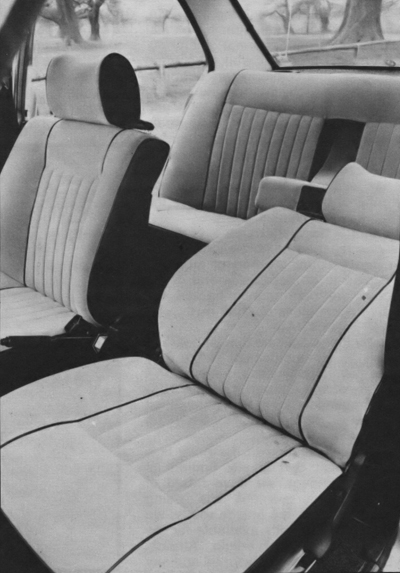 |
||||||||||||||||||||||||||||||||||||||||||||||||||||||||||||||||||||||||||||||||||||||||||||||||||||||||||||||||||||||||||||||||||||||||||||||||||||||||||||||||||||||||||||||||||||||||||||||||||||||||||||||||||||||||||||||||||||||||||||||||||||||||||||||||||||||||||||||||||||||||||||||||||||||||||||||||||||||||||||||||||||||||||||||||||||||||||||||||||||||||||||||||||||||||||||||||||||||||||||||||||||||||||||||||||||||||||||||||||||||||||||||||||||||||||||||||||||||||||||||||||||||||||||||||||||||||||||||||||||||||||||||||||||||||||||||||||||||||||||||||||||||||||||||||||||||||||||
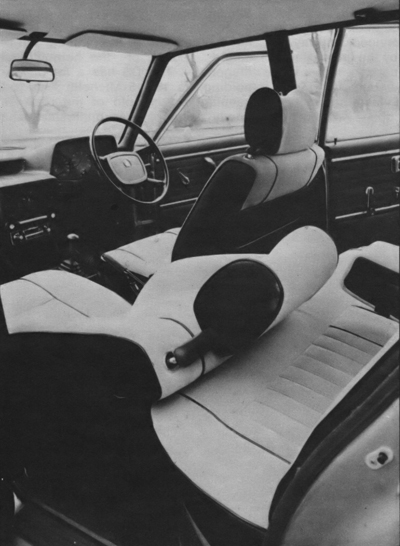 |
|||||||||||||||||||||||||||||||||||||||||||||||||||||||||||||||||||||||||||||||||||||||||||||||||||||||||||||||||||||||||||||||||||||||||||||||||||||||||||||||||||||||||||||||||||||||||||||||||||||||||||||||||||||||||||||||||||||||||||||||||||||||||||||||||||||||||||||||||||||||||||||||||||||||||||||||||||||||||||||||||||||||||||||||||||||||||||||||||||||||||||||||||||||||||||||||||||||||||||||||||||||||||||||||||||||||||||||||||||||||||||||||||||||||||||||||||||||||||||||||||||||||||||||||||||||||||||||||||||||||||||||||||||||||||||||||||||||||||||||||||||||||||||||||||||||||||||||
 |
 |
||||||||||||||||||||||||||||||||||||||||||||||||||||||||||||||||||||||||||||||||||||||||||||||||||||||||||||||||||||||||||||||||||||||||||||||||||||||||||||||||||||||||||||||||||||||||||||||||||||||||||||||||||||||||||||||||||||||||||||||||||||||||||||||||||||||||||||||||||||||||||||||||||||||||||||||||||||||||||||||||||||||||||||||||||||||||||||||||||||||||||||||||||||||||||||||||||||||||||||||||||||||||||||||||||||||||||||||||||||||||||||||||||||||||||||||||||||||||||||||||||||||||||||||||||||||||||||||||||||||||||||||||||||||||||||||||||||||||||||||||||||||||||||||||||||||||||||
|
The
Citroen was a highly controversial car when it first appeared but all
that has died down now. Into the breach has stepped instead the Ro80 as
a sort of sacrificial car on the altar of revolutionary ideas. The
problem from the word go has been engine durability, and although this
has been tediously sorted out until it is at roughly the lowest
acceptable level (using reciprocating engines as the yardstick), NSU
steadfastly stick by their warranty and replace defective engines
without a quibble. Mind you, if they had not done this, the Ro80 would
have long ago become an extinct species. |
 |
||||||||||||||||||||||||||||||||||||||||||||||||||||||||||||||||||||||||||||||||||||||||||||||||||||||||||||||||||||||||||||||||||||||||||||||||||||||||||||||||||||||||||||||||||||||||||||||||||||||||||||||||||||||||||||||||||||||||||||||||||||||||||||||||||||||||||||||||||||||||||||||||||||||||||||||||||||||||||||||||||||||||||||||||||||||||||||||||||||||||||||||||||||||||||||||||||||||||||||||||||||||||||||||||||||||||||||||||||||||||||||||||||||||||||||||||||||||||||||||||||||||||||||||||||||||||||||||||||||||||||||||||||||||||||||||||||||||||||||||||||||||||||||||||||||||||||||
|
gearbox mounted ahead of the engine and the front-axe line. Optional is a four-speed, semi-automatic transmission. Brakes are disc at the front and drum astern and give 345sq in of lining area in a car that weighs 28661b at the kerb. Both the brakes and the steering are power-assisted from a central high- pressure hydraulic system that also links in with the self-levelling, oleopneumatic, all-independent suspension. The turning circle is 36ft (good for a front-wheel-drive saloon) but more important is the fact that the wheel requires only three turns lock-to-lock, reflecting Citroen's demonstrated belief in the rightness of high-geared steering. Remember that the SM needs only two turns lock-to-lock and Citroen's design engineers consider even that to be too low-geared. The BMW is not in the position to make great claims to ingenuity. Instead, it is a well-developed design that has stamped out the criticism that has been levelled at both the three-litre models and the 2002 series, the old 2000 range being beyond the point where criticism could hep. In terms of power, the 520 falls exactly mid-way between the 2002 and the 2002Tii at 115bhp(DIN) at 580Orpm with 119lb/ft at 3700rpm. It runs on a compression of 9.0 to one and is fuelled via a pair of Stromberg carburettors that give better emission control than most types. There is now also an injection edition of this engine that provides more performance and power as we as greater smoothness. With a bore of 89mm and a stroke of 80mm, the 520's engine is dimensionally the same as the 2002 range and the 2000 that went before it. The basis of its success is its general cleanliness and the use of a singe overhead camshaft to operate the valves through short rocker arms. Drive is to the rear axle through an all-synchromesh, four-speed gearbox, the direct top of which gives 17.6mph per 1000rpm against the DS's 22.4mph per 1000. Brakes are a disc/drum mix with a swept area of 325sq in for the car's 27001b kerb weight. Steering is manual only and needs 3.7 turns for a turning circle of just under 34ft. Suspension is, naturally, independent all round by coils and trailing arms at the rear with much better geometry than that found in the 2002; at the front the Macpherson type struts are tilted 12deg rearwards with the springs offset in relation to the damper centreline. It's all good stuff but not exactly dramatic, any of it. The important thing is that it works and works well, as we shall soon see. Physically, the Citroen is the biggest vehicle at 15ft 10.5in overall, sitting on a wheelbase of 10ft 3in, the Ro80 is next at 15ft 8in on a wheelbase of 9ft 4.5in; the BMW is noticeably shorter at 15ft 2in with a wheelbase of 8ft 8in. |
|||||||||||||||||||||||||||||||||||||||||||||||||||||||||||||||||||||||||||||||||||||||||||||||||||||||||||||||||||||||||||||||||||||||||||||||||||||||||||||||||||||||||||||||||||||||||||||||||||||||||||||||||||||||||||||||||||||||||||||||||||||||||||||||||||||||||||||||||||||||||||||||||||||||||||||||||||||||||||||||||||||||||||||||||||||||||||||||||||||||||||||||||||||||||||||||||||||||||||||||||||||||||||||||||||||||||||||||||||||||||||||||||||||||||||||||||||||||||||||||||||||||||||||||||||||||||||||||||||||||||||||||||||||||||||||||||||||||||||||||||||||||||||||||||||||||||||||
|
|
PERFORMANCE The
outlay of £3000 is not the guarantee of lots of performance. There are
smaller and cheaper cars that will comfortably blow the hubcaps off
these three, yet all provide very different performance. For sheer
smoothness and general unobtrusiveness, the Ro80 is incomparably good.
It simply hums along with an audible warning built into the tachometer
to guard against the over-revving that can so easily occur. So
unobtrusive is the engine that it is possible to overlook top in
built-up areas and charge obliviously along in second. However,
performance away from low speeds is uninteresting, the rotary showing
its true worth high up the rev scale. Nevertheless, it is smooth and
has perfectly adequate performance most of the time; just that it's not
a charger away from the traffic lights in the way that the BMW gets
into it for example. Fuel consumption in the Ro80 is poor but slightly
more forgivable because of its 8 gallon tank capacity. However, 16 to
18mpg is depressingly normal consumption for run-of-the-mill commuter
motoring. The torque converter between the engine and the gearbox
overcomes the problem of flexibility in this generally peaky engine, so
that around town one has the advantages of automatic transmission at
the same time as full manual control over the three speeds. So don't
buy a Ro80 if, a) you like blasting away from the traffic lights or, b)
you consider fuel consumption to be important. Buy it, though, if you
place smoothness and easy cruising high on your list. The Ro80 has no
particular objection to cruising at 100 or a bit more, and it is so
fussless mechanically that one tends to make use of this potential
almost inadvertently. |
||||||||||||||||||||||||||||||||||||||||||||||||||||||||||||||||||||||||||||||||||||||||||||||||||||||||||||||||||||||||||||||||||||||||||||||||||||||||||||||||||||||||||||||||||||||||||||||||||||||||||||||||||||||||||||||||||||||||||||||||||||||||||||||||||||||||||||||||||||||||||||||||||||||||||||||||||||||||||||||||||||||||||||||||||||||||||||||||||||||||||||||||||||||||||||||||||||||||||||||||||||||||||||||||||||||||||||||||||||||||||||||||||||||||||||||||||||||||||||||||||||||||||||||||||||||||||||||||||||||||||||||||||||||||||||||||||||||||||||||||||||||||||||||||||||||||||||
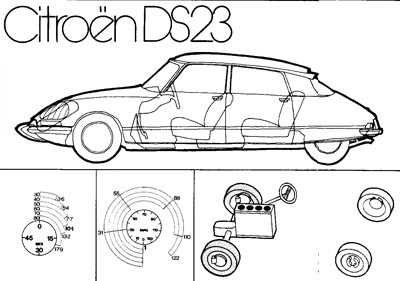 |
|||||||||||||||||||||||||||||||||||||||||||||||||||||||||||||||||||||||||||||||||||||||||||||||||||||||||||||||||||||||||||||||||||||||||||||||||||||||||||||||||||||||||||||||||||||||||||||||||||||||||||||||||||||||||||||||||||||||||||||||||||||||||||||||||||||||||||||||||||||||||||||||||||||||||||||||||||||||||||||||||||||||||||||||||||||||||||||||||||||||||||||||||||||||||||||||||||||||||||||||||||||||||||||||||||||||||||||||||||||||||||||||||||||||||||||||||||||||||||||||||||||||||||||||||||||||||||||||||||||||||||||||||||||||||||||||||||||||||||||||||||||||||||||||||||||||||||||
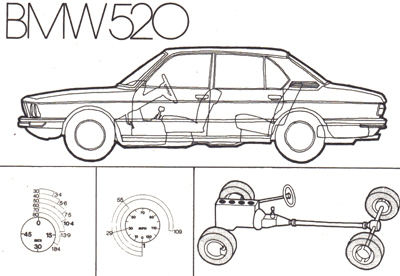 |
|||||||||||||||||||||||||||||||||||||||||||||||||||||||||||||||||||||||||||||||||||||||||||||||||||||||||||||||||||||||||||||||||||||||||||||||||||||||||||||||||||||||||||||||||||||||||||||||||||||||||||||||||||||||||||||||||||||||||||||||||||||||||||||||||||||||||||||||||||||||||||||||||||||||||||||||||||||||||||||||||||||||||||||||||||||||||||||||||||||||||||||||||||||||||||||||||||||||||||||||||||||||||||||||||||||||||||||||||||||||||||||||||||||||||||||||||||||||||||||||||||||||||||||||||||||||||||||||||||||||||||||||||||||||||||||||||||||||||||||||||||||||||||||||||||||||||||||
|
TUNING POTENTIAL Basically
these are cars that do not lend themselves to modification, since they
do not have sporty aspirations and in the case of the Citroen and the
NSU have at least one factor working against any attempt at
modification for more performance. MAINTENANCE AND SPARES Because
of its hydraulics, suspension and fuel injection system the Citroen is
the most complicated of the trio, but it's also the most thoroughly
developed which thus ensures that any problems that do arise are
unlikey to be brand-new ones. Citroen have set themselves up with a
comfortably-sized and secure looking dealer network around the country
and back it with a spare parts system that seems to work. The Citroen
is not a DIY car, apart from routine servicing of spark plugs and such;
major jobs require special machinery, tools and techniques. But then
one assumes that a person paying £3000 for a car will be sure enough of
his income to have it properly serviced, anyway. NSUs are handed by the
increasingly healthy Audi dealer network. Since the German masters are
extremely anxious to keep the Ro80 as a viable proposition in this
country, they spare no effort to please the customers. But as with all
German cars, spare parts and service are expensive. HANDLING, STEERING, BRAKES A
buyer who plonks £3000 on the line has the right to expect that his
purchase will have good dynamic qualities. He is unlikely to be
disappointed in any member of this group. RIDE AND COMFORT We
have said in the past that the BMW 2002 was too firm in its suspension
and that the three-litre was too soft. Well, the 520 is just right. It
falls neatly between the two types and gives a well-controlled,
reliable sort of ride that is not exceptional, merely very good. The
seats are firm, comfortable and not very well shaped, although the
standard of accommodation is generous, dimensionally exceeding the
three-litre in some areas. The front seats go through the motions of
being contoured, but they don't grip in the right paces so that one is
left free to wobble about. Nor is it a particularly quiet car, both
engine and windnoise being obtrusive at high speeds, although a
concerted effort at the factory should be able to overcome this in
short time. Road noise is a conspicuous absentee and although the fan
for the ventilation system is remarkably quiet, the air gushing into
the cabin through the large central vent makes its own roar. Some
internal smoothing should help overcome that. CONTROLS, INSTRUMENTS Citroen
have rationalised the DS's instruments to a practical minimum, then
backed this up with an immensely sensible warning system. There is a
tachometer and a speedometer facing the driver as well as a fuel gauge,
while the third major face is an enunciator panel that carries all the
warning lights; those for hydraulics temperature and oil pressure
operate in conjunction with the large, glaring 'stop' sign. A check
button enables the driver to establish that the circuits are
functioning. Citroen have steadfastly stuck to steering column
gearchange for the DS models and it works so well that there would
appear to be little advantage in moving it to the floor-except for
reasons of fashion, which have never interested Citroen, anyway. The
handbrake is mounted under the dash and is hard to reach unless the
driver is unbelted (shudder) or is wearing an inertia-reel harness.
Minor controls are worked by three steering-column stalks and it s
worth noting that Citroen still insist on manual-cancelling winkers. CONCUSIONS We
would love to love the NSU Ro80, but all the time there would be this
nagging doubt in our mind about its durability. Sure, the factory have
shown themselves as being jolly decent types by super-honouring the
engine warranty and there is no doubt that the Wankels are getting
better day-by-day, but it would be a bit like marrying a reformed
husband-poisoner. The car's obvious qualities are so good that anyone
with £3000 in his pocket should feel no shame in attempting a
flirtation for reasons of smoothness, comfort, styling, suspension and,
even at this late stage, pioneermanship! |
|||||||||||||||||||||||||||||||||||||||||||||||||||||||||||||||||||||||||||||||||||||||||||||||||||||||||||||||||||||||||||||||||||||||||||||||||||||||||||||||||||||||||||||||||||||||||||||||||||||||||||||||||||||||||||||||||||||||||||||||||||||||||||||||||||||||||||||||||||||||||||||||||||||||||||||||||||||||||||||||||||||||||||||||||||||||||||||||||||||||||||||||||||||||||||||||||||||||||||||||||||||||||||||||||||||||||||||||||||||||||||||||||||||||||||||||||||||||||||||||||||||||||||||||||||||||||||||||||||||||||||||||||||||||||||||||||||||||||||||||||||||||||||||||||||||||||||||
|
|||||||||||||||||||||||||||||||||||||||||||||||||||||||||||||||||||||||||||||||||||||||||||||||||||||||||||||||||||||||||||||||||||||||||||||||||||||||||||||||||||||||||||||||||||||||||||||||||||||||||||||||||||||||||||||||||||||||||||||||||||||||||||||||||||||||||||||||||||||||||||||||||||||||||||||||||||||||||||||||||||||||||||||||||||||||||||||||||||||||||||||||||||||||||||||||||||||||||||||||||||||||||||||||||||||||||||||||||||||||||||||||||||||||||||||||||||||||||||||||||||||||||||||||||||||||||||||||||||||||||||||||||||||||||||||||||||||||||||||||||||||||||||||||||||||||||||||
| ©1973 Car/Citroënët 2009 | |||||||||||||||||||||||||||||||||||||||||||||||||||||||||||||||||||||||||||||||||||||||||||||||||||||||||||||||||||||||||||||||||||||||||||||||||||||||||||||||||||||||||||||||||||||||||||||||||||||||||||||||||||||||||||||||||||||||||||||||||||||||||||||||||||||||||||||||||||||||||||||||||||||||||||||||||||||||||||||||||||||||||||||||||||||||||||||||||||||||||||||||||||||||||||||||||||||||||||||||||||||||||||||||||||||||||||||||||||||||||||||||||||||||||||||||||||||||||||||||||||||||||||||||||||||||||||||||||||||||||||||||||||||||||||||||||||||||||||||||||||||||||||||||||||||||||||||